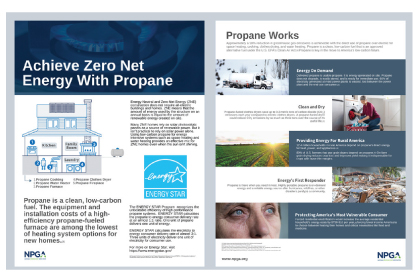Thursday, April 30, 2020
 What are the real costs of a move to an all-electric world? To start discussions with local or state decision makers on the impact of forced, policy-driven electrification, the National Propane Gas Association (NPGA) recently released a collection of communications tools for the industry.
What are the real costs of a move to an all-electric world? To start discussions with local or state decision makers on the impact of forced, policy-driven electrification, the National Propane Gas Association (NPGA) recently released a collection of communications tools for the industry.The new Fight Electrification Issue Kit tells the data-based story that electric isn’t always better. The electrical grid is extremely inefficient. At most power plants, only 1/3 of the energy used to generate electricity actually arrives to consumers in the form of useable electricity. That means almost 2/3 of the energy is being lost and wasted. That much waste creates an opportunity for propane. Propane is a direct use energy. Direct use means there is no loss of propane from the tank to the end-use. NPGA wants to help members tell that story.
It is hoped the communications tools will inform policymakers that widespread electrification is a complex and expensive undertaking. It will require enormous investments across our electricity delivery system. The power generation, transmission, and distribution sectors would have to deal with larger electric loads, especially in winter, and respond to new variabilities in demand. After all, if everybody wants to charge their electric vehicles once they get home from work, the grid must be ready.
The materials—which can be downloaded at https://www.npga.org/membership/my-npga/—can also be co-branded with the logo of a state association or propane company.
An open, transparent discussion about the environmental impacts, consumer costs, and economic ramifications of policy-driven electrification efforts is needed. It is hoped with the NPGA materials, those discussions can be started more readily.
Sarah McLallen is vice president, communications and member services, with the National Propane Gas Association (NPGA).


